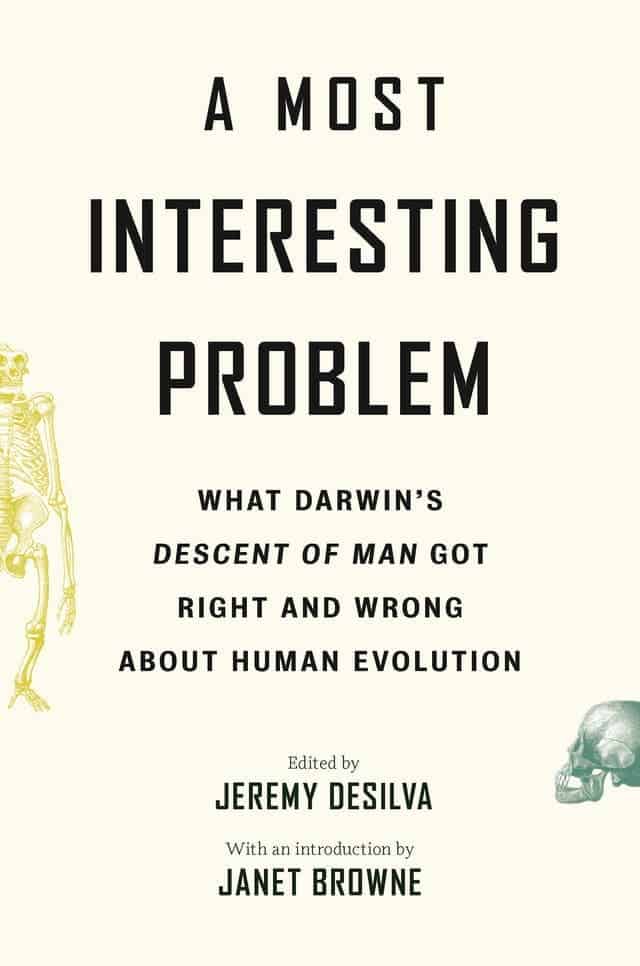
“A Most Interesting Problem: What Darwin’s Descent of Man got Right and Wrong About Human Evolution”
Edited by Jeremy DeSilva
Princeton University Press, 288 pages | Buy on Amazon
In 1859, Charles Darwin published what’s arguably the most influential book in modern science: On the Origin of Species by Means of Natural Selection, or the Preservation of Favoured Races in the Struggle for Life. In this seminal work, Darwin introduced the concept of natural selection — a cornerstone of modern biology — as a mechanism for evolution.
The British naturalist defined evolution as “descent with modification,” by which he meant species change over time, give rise to new species, and share a common ancestor. Organisms with heritable traits that favor survival and reproduction will tend to be more successful and produce more offspring than their peers, causing the traits to increase in frequency over generations — this is the crux of natural selection.
Unsurprisingly, these views, which we now hold for granted, were met with great backlash by Darwin’s peers and Victorian society at large. Although Darwin never addresses the question of human evolution in On the Origins of Species, the implications were obvious. If all species descend with modification, that means humans also descended from a lesser form, which was incongruent with creationist views of the time.
Darwin avoided addressing human evolution on purpose because he needed more time to construct his thesis, being well aware that was a sensitive topic. In 1871, the scientist finally published his follow-up The Descent of Man, in which he attempted to explain human evolution during a time when there were no confirmed fossil records of human ancestors.
What Darwin got right, and what he didn’t
In the book, Darwin prefaced this topic as “the highest and most interesting problem for the naturalist.” On this note, in the newly released A Most Interesting Problem, acclaimed scientists present what Darwin got right and what he got horribly wrong about the origin, history, and biological variation of humans 150 years after he wrote his thesis on human evolution.
The book is edited by Jeremy DeSilva, associate professor of anthropology at Dartmouth College, and features contributions from world-renowned experts in their field. Each chapter is authored by a different researcher discussing modern evidence supporting or countering Darwin’s views.
Unsurprisingly for a scientist of his magnitude with a phenomenal intuition of the natural world, Darwin was spot on with many of his assertions. For instance, his comparative study of living primates led him to claim that humans must have evolved in Africa, which is also .
He also made claims that have now been proven flat out wrong. His most obvious blunders were related to matters of race and sex. Darwin asserted that humans are separated into biological races that follow a hierarchy and that women were biologically inferior to men virtually in every way. Later, these views would be exploited by proponents of eugenics and white-supremacists in the 20th century.
That being said, it’s easy to judge Darwin’s by today’s standards. But during his time, Darwin was no more sexist or racist than his Victorian peers — that was simply the unfortunate status quo.
One can only wonder how the British naturalist must have reacted in the face of confounding evidence. My guess is that he would live by his scientific creed and renounce his previous claims in favor of those supported by evidence such as DNA, brain scans, and the fossils belonging to more than 60 hominins.
Ultimately, A Most Interesting Problem is a fantastic run-down of today’s understanding of human evolution and a great showcase of the scientific process. Science isn’t meant to be perfect, but its self-correcting nature makes it the best tool at our disposal for approximating reality.





